The Dukes of Bedford
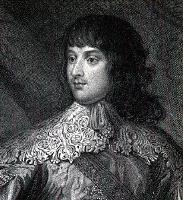
William, 5th Earl and 1st Duke of Bedford
He was born in August 1616 and was the son of the 4th Earl. He was made Knight of the bath at the coronation of Charles I (1625-1649) in 1626. He was Member of Parliament for Tavistock [Devon] in 1640 and 1641. On the outbreak of the English Civil War in 1642 he was made General of the Horse and was present at the first major battle of the war, at Edgehill on 23rd October that year. Being commander-in-chief of the cavalry was not a particularly distinguished position as the parliamentary cavalry at this stage of the war was dismissed as containing “decayed serving men and tapsters” and usually came up short in its clashes with the Royalist cavalry. He led a campaign in the West Country in 1642 against the Marquess of Hertford and, despite outnumbering his opponent found many of his troops deserting and had to return without success, for which he received criticism.
In 1643 the Earl, with the Earl of Holland and the Earl of Clare sought to mediate between King and Parliament. That year saw a number of military successes for the King in the West Country and he was in no mood for peace. Bedford then changed sides, joining the King and fighting at the siege of Gloucester and the indecisive First Battle of Newbury in September. Despite this the Earl changed sides again in December 1643, probably because the King’s commanders were wary of his allegiances. However, he had now alienated Parliament and they refused to appoint him and he was not allowed to take his seat in the House of Lords until the restoration of Charles II (1660-1685) in 1660. Consequently the earl retired to Woburn.
The earl took an active part in the Restoration and carried the sceptre at Charles’ coronation. He carried the sceptre of Queen Mary (1689-1694) at her coronation in 1689. He was Lord Lieutenant of Bedfordshire and Cambridgeshire from 1689 until his death and Lord Lieutenant of Middlesex from 1692. On 11th May 1694 he was created Marquess of Tavistock and Duke of Bedford because he was “father to the Lord Russell, the ornament of his age, whose great merit it was not enough to transmit by history to posterity”. This was William Russell who was executed for treason by Charles II in 1683.
On 13th June 1695 the title Baron Howland of Streatham was created on the marriage of the duke’s grandson, and heir, Wriothesley, with the daughter of John Howland, the title to pass to his grandson and his heirs begotten on the body of Elizabeth Howland.
The duke married Anne, daughter of Robert, Earl of Somerset in 1637. She had been born in the Tower of London where her mother, the Countess of Essex, was imprisoned in the Tower of London. Anne died at Woburn on 10th May 1684 and was buried at Chenies [Buckinghamshire] in the Russell Mausoleum. The Duke died at Bedford House in The Strand [Middlesex] on 7th September 1700 and was buried at Chenies on 17th September. His son Francis, born in 1638 died in 1678 – “he was of a melancholy disposition, which by ten years’ travel (1657-1667) he sought to dispel”.
The duke’s second son, William, was born in 1639. He was Member of Parliament for Tavistock from 1660 to 1679 and for Bedfordshire from 1679 to 1681. He was made a Privy Councillor in 1679 and was leader of the Whig party in the House of Commons, fervently supporting the exclusion of the future James II (1685-1688) from the throne on account of his Roman Catholicism in 1680. He was accused of taking part in the Rye House Plot to seize Charles II and James II at the house near Hoddesdon [Hertfordshire] on their return to London from watching horse racing at Newmarket [Cambridgeshire] in 1683. He was convicted and sentenced to death, being executed at Lincoln’s Inn Fields. His son, Wriothesley, would become the 2nd Duke.
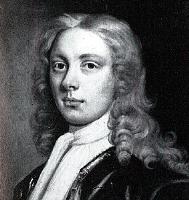
Wriothesley, 2nd Duke of Bedford
He was the son of the executed and disgraced William, second son of the 1st Duke of Bedford, and his wife Rachel, widow of Lord Vaughan and daughter of Thomas Wriothesley, Earl of Southampton. He was born on 1st November 1680 and so was just three when his father was executed. His grandfather was created Marquess of Tavistock and Duke of Bedford in 1694 and Wriothesley was thus the first heir of the Duke to hold the title Marquess of Tavistock. He attended Magdalene College, Oxford.
The 2nd Duke was made Gentleman of the Bedchamber in 1701 and was Lord Lieutenant of Bedfordshire, Cambridgeshire and Middlesex from that year until his death. Like his father he was a Whig. He married Elizabeth, daughter of John Howland at Streatham [Surrey] on 23rd May 1695, when he was just fourteen and she was twelve or thirteen. To mark the occasion his grandfather was given the title Baron Howland, a title which, again, is still extant, being held by the son of the Marquess of Tavistock before he becomes Duke of Bedford.
The 2nd Duke did not long enjoy his honours. He died of smallpox on 26th May 1711 aged just 30. He was buried at Chenies on 30th May. His widow also died of smallpox, on 29th July 1724, at Streatham, aged 42. She is also buried at Chenies. He had two sons who died in his lifetime, both called William. The first boy died in December 1703 when just four months old and the second in 1707, also an infant. Both were buried at Chenies.

Wriothesley, 3rd Duke of Bedford
He was the third son of the 2nd Duke and was born on 25th May 1708 at Streatham. He was three years old when he succeeded to the title. As an adult he was, like his father and grandfather, a Whig. He married Anne, daughter of Scrope, Duke of Bridgewater in 1725. His mother-in-law was Elizabeth, third daughter of John Churchill, 1st Duke of Marlborough. The 3rd duke died at La Coruna in Spain on 23rd October 1732, aged 25. He was buried at Chenies on 14th December. His widow died on 22nd June 1762 having married William, Earl of Jersey the year after her first husband’s death.
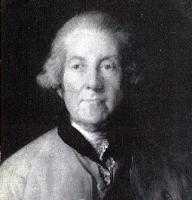
John, 4th Duke of Bedford
He was the fourth son of the 2nd Duke and was born on 30th September 1710 at Streatham. He was appointed First Lord of the Admiralty and also Privy Councillor in 1744. The following year he was appointed Lord Justice. He was also Lord Lieutenant of Bedfordshire from 1745 and Devon from 1751 until his death. He was made a major-general in 1755 and lieutenant-general in 1759. From 1747 until his death he was President of the Foundling Hospital.
He was appointed Lord Lieutenant of Ireland from 1756 to 1761 and in 1762 and 1763 served as ambassador to France being Lord President of the Council from 1763 to 1765. Like all his family he was a Whig and an opponent of Robert Walpole, prime-minister from 1722 to 1742 and leader of a faction of the party known as the Bedford Whigs or Bloomsburg Gang. Walpole’s son, Horace, described the Duke thus: “He was a man of inflexible honesty and goodwill to his country: his great economy was called avarice; if it was so, it was blended with more generosity and goodness than that passion will commonly unite with. His parts were certainly far from shining, and yet he spoke readily, and, upon trade, well: his foible was speaking upon every subject, and imagining he understood it, as he must have done, by inspiration. He was always governed; generally by the duchess, though unmeasurably obstinate, when once he had formed or had an opinion instilled into him … If he could have thought less well of himself, the world would probably have thought better of him”. Lord Charlemont said of him: “he was a man of excellent parts, though deficient in common sense, in the highest degree passionate, but perfectly good-natured … he possessed much quickness of parts, real goodness of disposition, great warmth, and great facility of temper, which rendered him accessible to some who were totally unworthy of his confidence”.
The duke married his cousin Diana, daughter of Charles, 3rd Earl of Sunderland by Anne, daughter of John Churchill, 1st Duke of Marlborough in 1731. She died of consumption at Southampton House on 27th September 1735 and was buried at Chenies, aged just 25. His second wife, whom he married in 1737, was Gertrude, daughter of John, 1st Earl Gower. She was described by Lord Charlemont as: “the most artful and dangerous of women” of whom he was “almost afraid to speak”!
The duke died at Bedford House in Bloomsbury on 14th January 1771, aged 60 and was buried at Chenies on 30th January. His widow died on 1st July 1794, aged 75. The duke’s son by his first wife, John, died in 1732 and is buried at Chenies. His second son by his second wife, Francis, died as the result of a fall from his horse on 22nd March 1767 and was buried at Chenies, aged just 27.
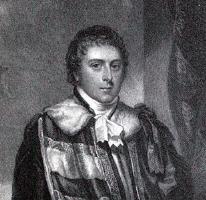
Francis, 5th Duke of Bedford
He was the son of Francis, Marquess of Tavistock and grandson of the 4th Duke. He was born on 23rd July 1765 and was educated at Westminster School, succeeding to the dukedom at the age of five. A Whig, like all his family, he died unmarried at Woburn Abbey after a fortnight’s illness, having delayed an operation for a hernia for too long, on 2nd March 1802, aged 36. He is buried at Chenies.
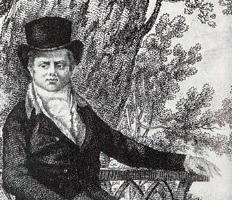
John, 6th Duke of Bedford
He was the brother of the 5th Duke and was born on 6th July 1766. He served as ensign in the 3rd Foot Guards from 1783 to 1785 and was Whig Member of Parliament for Tavistock from 1788 to 1802 when he became duke. He was Lord Lieutenant of Ireland in 1806 and 1807 and a Privy Councillor in 1806. He married Georgina Elizabeth, daughter of George, 4th Viscount Torrington in 1786. She died at Bath [Somerset] in 1801 and was buried at Chenies. On 23rd June 1803 he married Georgiana, daughter of Alexander, 4th Duke of Gordon. The duke died at the Doune of Rothiemurchus [Perth] on 20th October 1839, aged 73 and was buried at Chenies. His widow, fifteen years his junior, died on 24th February 1853 at Nice where she was buried.
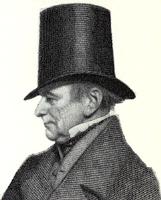
Francis, 7th Duke of Bedford
He was the son of the 6th Duke by his first wife and was born on 13th May 1788 in Pall Mall, London. He was educated at Westminster School and Trinity College, Cambridge. He was Whig Member of Parliament for Peterborough from 1809 to 1812 and for Bedfordshire from 1812 to 1832 when he was summoned to the House of Lords as Baron Howland. He became a privy councillor in 1846 and was Lord Lieutenant of Bedfordshire from 1859 until his death.
The 7th Duke paid great attention to his Bedfordshire estates and was particularly keen to look after the interest of his tenants. He is chiefly remembered today for creating the Bedford Estate houses which so dominate such villages as Husborne Crawley, Ridgmont and Woburn. These were a huge advance on the cottages in which most of the estate tenants had lived until that time, being warm and well built from brick and having separate bedrooms for parents and children rather than a communal bed space in the attics of small, cold, half-timbered cottages. The rents were below market value and generous gardens meant that the occupiers could grow their own produce. Such was the improvement in the accommodation that they afforded that they were known locally as The Duke of Bedford’s Palaces.
The duke married Anna Maria, daughter of Charles, 3rd Earl Harrington on 8th August 1808. She was five years older than her husband and died on 3rd July 1857 in Belgrave Square, London and was buried at Chenies. The duke died at Woburn Abbey on 14th May 1861, the day after his 73rd birthday, and was buried at Chenies.
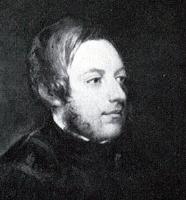
William, 8th Duke of Bedford
He was the only child of the 7th Duke and was born at Grosvenor Square, London, on 1st July 1809. He was educated at Eton and Christ Church College, Oxford and served as Liberal Member of Parliament for Tavistock from 1832 to 1841. He died unmarried on 27th May 1872, aged 62. His death was sudden, taking place in the front hall of 6 Belgrave Square. He was buried at Chenies.
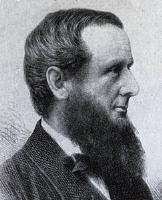
Francis Charles Hastings, 9th Duke of Bedford
He was the son of Major-General Lord George William Russell, envoy to Berlin, by his wife Elizabeth Anne, daughter of John Theophilus Rawdon and was born on 16th October 1819. His father was the 7th duke’s brother. He entered the Scots Guards in 1838 but retired in 1844 when he married. He was Liberal Member of Parliament for Bedfordshire from 1847 to 1872 when he acceded to the dukedom.
The 9th Duke was very interested in agricultural developments. He established the Woburn Experimental Farm, based in Mill Road, Husborne Crawley and was President of the Royal Agricultural Society in 1880. He was Lord Lieutenant of Huntingdonshire from 1884 until his death.
He married Elizabeth, daughter of George John, 5th Earl de la Warr on 18th January 1844. Sadly he caught pneumonia and shot himself whilst temporarily unbalanced on 14th January 1891 at 81 Eaton Square, London, aged 71. His widow died on 22nd April 1897 at Chesham [Buckinghamshire], aged 83. Both she and her husband were cremated and their ashes buried at Chenies.

George William Francis Sackville, 10th Duke of Bedford
The son of the 9th Duke, he was born on 16th April 1852 at Eaton Place West, London. He was educated at Balliol College, Oxford and was Liberal Member of Parliament for Bedfordshire from 1875 to 1885 and Sheriff of Bedfordshire in 1889. He was Chairman of Bedfordshire County Council from 1892 until his death.
The duke died on 23rd March 1893 at 37 Chesham Place, London, aged just 41; he suffered from diabetes. He was buried at Chenies. He married Adeline Mary, daughter of Charles, 3rd Earl Somers on 24th October 1876. She died in 1920.
Herbrand Arthur, 11th Duke of Bedford
He was the brother of the 10th duke and was born on 19th February 1858 at Eaton Place West. He was educated at Balliol College, Oxford and in 1877 joined the Grenadier Guards, seeing active service in Egypt in 1882. He was aide-de-camp to the Viceroy of India in 1885 and 1886.
He was Lord lieutenant of Middlesex from 1898 and the longest serving Chairman of Bedfordshire County Council, from 1895 to 1927. The Duke had a keen interest in natural history and was instrumental in saving the Père David Deer, which was extinct in its native China, by buying pairs from European zoos, bringing them back to Woburn and breeding them in the Park. He had other exotic animals and the writer’s grandfather recalled having to muck out a North American bison called Bill before the First World War.
He married Mary du Caurroy, daughter of the Archdeacon of Lahore, on 31st January 1888. She was renowned as the Flying Duchess and was an active suffragette. She suffered from tinnitus and became interested in aviation later in life, which she claimed gave her some relief from the noise in her ears. In 1929, aged 64, she and two crew flew from England to Karachi in modern Pakistan, a journey of 10,000 miles, then flew back to England, the round trip taking eight days. The following year she flew from London to Cape Town with a co-pilot, taking one hundred hours spread over ten days.
She was also a benefactor to Woburn, building the cottage hospital in Leighton Street which was named Maryland in her honour. She took off from Woburn Abbey on 22nd March 1937 but never returned. It is assumed that she crashed in the North Sea somewhere off Great Yarmouth [Norfolk], her body was never found. She was 71.
The Duke died on 27th August 1940, aged 82. He had been president of the Cremation Society of Great Britain since 1921 so it is appropriate that he was himself cremated, at Golders Green Crematorium where, a few days before, Bedfordshire’s first County Archivist, George Herbert Fowler, had also been cremated,
Hastings William Sackville, 12th Duke of Bedford
He was the son of the 11th Duke and was born on 21st December 1888. He was educated at Eton and at Balliol College, Oxford. He was a committed pacifist between the wars having not seen action in World War One due to his bad health. The Duke died on 9th October 1953, aged 64, as the result of a shooting accident whilst hunting on his Devon estates. The Duke married Louisa Crommelin Roberta Jowitt Whitwell in 1914.
John Ian Robert, 13th Duke of Bedford
He was the son of the 12th Duke and was born on 24th May 1917. He joined the Coldstream Guards and saw active service in 1939 and 1940 before being invalided out with ill health. He was also a journalist and author. He opened Woburn Abbey to the public in 1954, with the assistance of his second wife. He later developed and opened Woburn Safari Park.
The duke married Clare Gwendoline Hollway on 6th April 1939. She died in 1945. His second wife, married in 1947, was Lydia Lyle, who died in 2008. His third wife was Nicole Milinaire who died in September 2012. The Duke spent much of his time in the south of France. He died on 25th October 2002, aged 85.
Robin, 14th Duke of Bedford
The son of the 13th Duke by his first wife, the duke was born on 21st January 1940. He ran the estate from the 1970s onwards. He created a world class golf course on the Woburn/Little Brickhill boundary and was innovative in his use of television to publicize the estate which was the focus of three series of a documentary called The Country House.
He married Henrietta Joan Tiarks in 1961. Sadly the Marquess, as he then was, suffered a severe stroke in 1988, aged just 48. He died from complications of another stroke on 13th June 2003 in a ward named after him as an active patron, The Tavistock Intensive Care Unit at the National Hospital for Neurology and Neurosurgery in London. He was 63 and had been duke for just under nine months.
Andrew, 15th Duke of Bedford
The present [2012] duke.